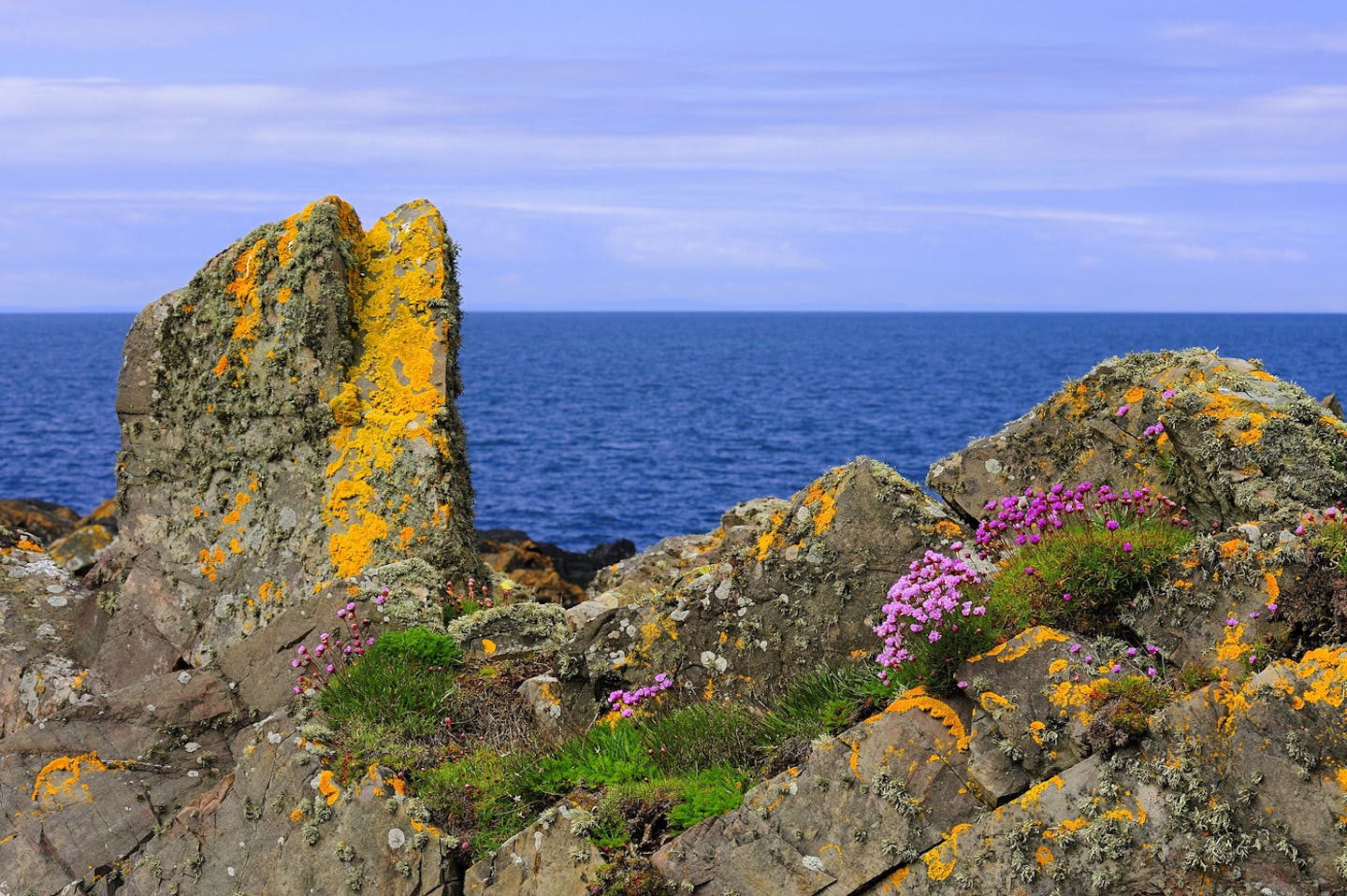Opegrapha edsonii: how life remarkably flourishes in frigid Antarctica
Our “Species of the Week” series highlights the flagship species of each of the 844 unique ecoregions contained within Earth’s bioregions.
In 2012, Norwegian botanist Dag Olav ØvstedalI and Brazilan professor Carlos Ernesto Gonçalves Reynaud Schaefer II discovered a new lichen species in Antarctica. Inhospitable to non-microbial life forms due to high elevation, an average temperature of -30℃, and the ground consisting of mostly exposed rock, this ecoregion was surprisingly found to have flourishing lichens. Often compared to moss, lichens cover an object like a rock or a tree, but rather than being a single plant, they are a combination of a fungus and an algae. This species named Opegrapha edsonii gives off a golden orange hue color and was officially identified at the microscopic level as a unique lichen.
Covering seven percent of the earth’s surface, there are 18,000 known species of lichen with more discovered every year. Found worldwide, they occur in almost every known environment. They can be flakey like peeling paint, leafy like vegetation, crusty like a coat of rust, or powdery like spilled flour. Some grow quickly, up to three feet in a year, and some grow slowly, living as long as 10,000 years. The word symbiosis, the interaction between two different organisms living in association with one another for the benefit of each, was invented to describe lichens. An organism made of both fungus, which provides the physical structure, and algae, which provides nutrients through photosynthesis, because separately these two lifeforms could not live in the specific habitat alone.
Case in point, Opegrapha edsonii was found growing on sheltered, loose fragments of rock in the Ellsworth Mountains, the highest range in Antarctica. Soils on the north-western facing slopes where small amounts of water were present were also found to contain the species. These soils were characterized by their dryness, lack of nutrients, and ice-cemented permafrost. Compared to the rusty-colored lichen Opegrapha gyrocarpa, found throughout Europe, Asia, and North America, Opegrapha edsonii has a similar reproductive structure. Breaking off powdery fragments called soredia, they reproduce asexually. The wind causes these spores to travel through the air and land in a new location.
Essential to many ecosystems, lichen provide food, habitat, and shelter for a variety of organisms. A deer can eat lichen for a meal, a bird can use parts for building a nest, and microscopic tardigrades can make their homes inside. In Antarctica however, where not many lifeforms exist other than the lichen themselves, Opegrapha edsonii plays perhaps its most important role, capturing carbon from the atmosphere. Along with algae and mosses, lichens take in approximately 14 billion tons of C02 per year and sequester it it at the earth’s surface.
Opegrapha edsonii is the flagship species of the Ellsworth Mountains Tundra ecoregion, located in the Continental Antarctica bioregion (AN1).



